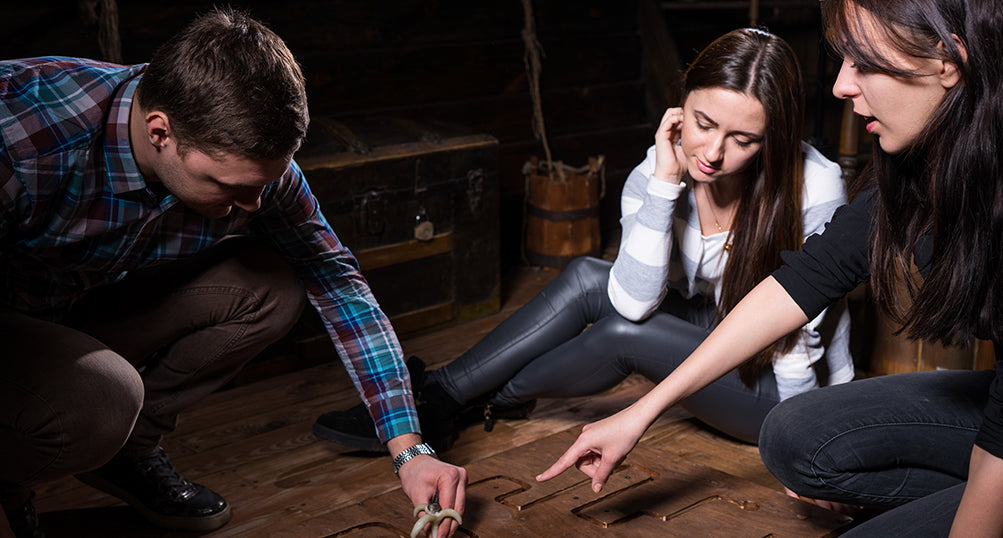It's difficult to pinpoint the exact timing of escape rooms coming to relevance, but two events in the early 2000s help us estimate when this idea came about. True Dungeon, a showcase at GenCon in 2003, featured many of the central themes that modern escape rooms have come to call familiar. All the way across the world in Kyoto, Japan, the Real Escape Game was founded in 2007, and the rest is history.
Since these two founding events over a four-year span, numerous other entities have opted to join the lock-solving fun. Plenty of different variations exist depending on what players are in the mood for. Before physical escape rooms were popular, many started as thought experiments on pen and paper. While analog and video game variations still harbor curiosity, the evolution into the physical has only made escape rooms more exciting.

Escape rooms started relatively simple, with basic décor and more thoughtful strategies that challenged players along the way. However, as these games have evolved, there have been notable updates to the physical escape room characteristics. Items like cleverly hidden keys, physical puzzles using different items and challenging locks that require a combination have upped the ante as time has gone on. In tandem with innovation, ideas like automation, immersive stories that match the atmosphere and further captivating décor can help take players to a different world entirely.
The theme of the escape room will sometimes dictate whether the keys you’ll be finding are physical or virtual, but either way you can bank on the sweet satisfaction of finally solving a puzzle. Sometimes a physical key will be hidden in a secret nook, or perhaps a revealed passcode will help you access a whole new area of the escape room itself. Even more complex puzzles may require a certain arrangement of items in order to finally move forward in the escape room challenge. The rush of a solved escape room comes from both the teamwork between you and your group, and of course the all-too-predictable human urge to find patterns in chaos.

As for the future, offshoots of the escape room have already begun. Numerous escape room video games for VR headsets are an exciting way for anyone looking to try their hand at innovative puzzles from a distance. Likewise, rage rooms are another spinoff of the escape room that instead allow a healthy release of pent-up emotions through destroying things – perhaps they’re not as mentally stimulating as an escape room, but always healthy and useful when it’s been a hard week. Only the future can tell us whether escape rooms stick around in popular culture, but the brainy among us will continue to have fun with them while the trend lasts!

